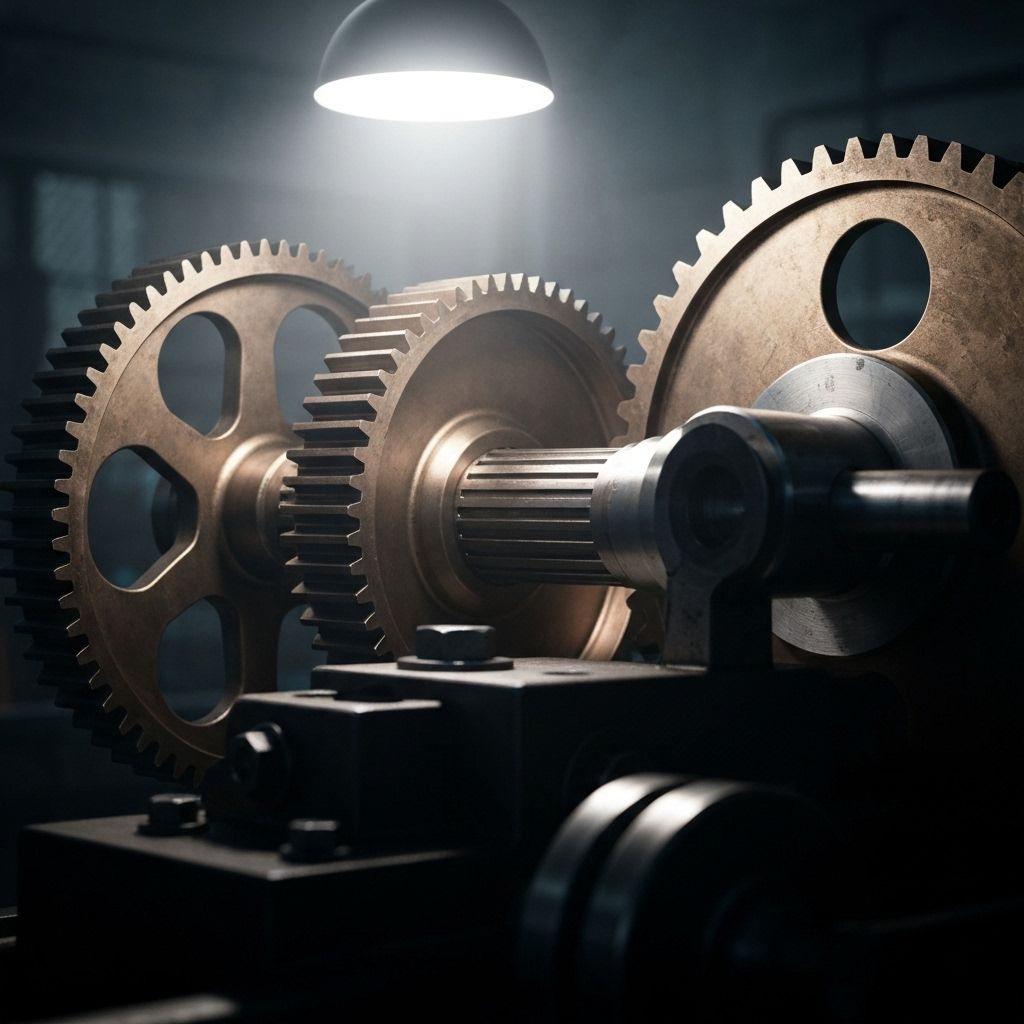
Understanding Different Types of Gears and Their Applications
# Understanding Different Types of Gears and Their Applications
Gears are fundamental mechanical components that transmit power and motion between machine parts. Understanding the different types of gears and their applications is crucial for selecting the right component for your machinery. Whether you're designing a new system or replacing existing components, choosing the correct gear type can significantly impact performance, efficiency, and longevity.
The Importance of Gear Selection
Selecting the appropriate gear type is not just about mechanical compatibility—it's about optimizing your entire system's performance. The wrong gear choice can lead to excessive noise, premature wear, reduced efficiency, and even catastrophic failure. Factors such as load capacity, speed requirements, space constraints, and operating environment all play critical roles in determining the ideal gear solution.
Spur Gears: The Foundation of Power Transmission
Spur gears are the most common and straightforward type of gear, featuring straight teeth parallel to the gear axis. Their simple design makes them cost-effective to manufacture and easy to install. These gears are ideal for applications requiring high-speed transmission with moderate loads.
The primary advantage of spur gears is their efficiency—they can achieve up to 98-99% power transmission efficiency when properly lubricated and maintained. However, they do produce more noise than helical gears due to the sudden engagement of the entire tooth face. Common applications include conveyor systems, machine tools, automotive transmissions, and industrial machinery where noise is not a primary concern.
At Mema Engineering, we manufacture spur gears from module 0.5mm to 14mm, with diameters ranging from 10mm to 1000mm, ensuring we can meet virtually any application requirement.
Helical Gears: Smooth and Quiet Operation
Helical gears represent an evolution of the spur gear design, featuring angled teeth that engage more gradually. This gradual engagement results in smoother operation, reduced noise levels, and increased load-carrying capacity. The angled teeth create axial thrust, which must be accommodated in the bearing design.
These gears are perfect for high-load, high-speed applications where noise reduction is important. They're commonly found in automotive transmissions, industrial gearboxes, heavy equipment, and precision machinery. The efficiency of helical gears is slightly lower than spur gears (typically 94-98%) due to the sliding action between teeth, but the benefits in noise reduction and load capacity often outweigh this minor efficiency loss.
Bevel Gears: Changing Direction with Precision
Bevel gears are designed to transmit power between intersecting shafts, typically at 90-degree angles, though other angles are possible. They come in several varieties, including straight bevel gears and spiral bevel gears (Gleason type).
Straight bevel gears are similar to spur gears but with conical shapes, while spiral bevel gears feature curved teeth that engage gradually, similar to helical gears. Spiral bevel gears offer smoother operation and higher load capacity but are more complex and expensive to manufacture.
Applications include differential drives in vehicles, hand drills, marine propulsion systems, and any machinery requiring direction changes in power transmission. Our manufacturing capabilities include bevel gears from module 1mm to 10mm, with diameters from 30mm to 400mm.
Worm Gears: High Reduction in Compact Spaces
Worm gears provide exceptionally high reduction ratios in a compact space, often achieving ratios of 20:1 to 300:1 in a single stage. They consist of a worm (resembling a screw) and a worm wheel (similar to a helical gear). One of their unique features is self-locking capability—the worm can drive the wheel, but the wheel cannot drive the worm, providing inherent safety in applications like elevators.
These gears are ideal for applications requiring large speed reductions, such as elevators, conveyor systems, tuning instruments, and lifting equipment. However, they have lower efficiency (typically 50-90%) due to significant sliding friction between the worm and wheel. Proper lubrication is essential for longevity and performance.
Internal Gears: Space-Saving Solutions
Internal gears, also known as ring gears, have teeth cut on the inside of a cylinder or ring. They mesh with external gears and are commonly used in planetary gear systems. These gears offer compact design, high load capacity, and smooth operation.
Applications include planetary gearboxes, automotive automatic transmissions, and compact drive systems. We manufacture internal gears from module 0.5mm to 6mm, with diameters from 20mm to 500mm.
Choosing the Right Gear for Your Application
When selecting a gear for your application, consider these critical factors:
**Load Capacity**: Determine the maximum torque and forces your system will experience. Helical and spiral bevel gears offer higher load capacity than spur gears of similar size.
**Speed Requirements**: High-speed applications benefit from precision-ground gears with proper tooth profiles. Consider the RPM range and whether speed reduction or increase is needed.
**Noise Levels**: If noise is a concern, helical or spiral bevel gears provide quieter operation than spur or straight bevel gears.
**Efficiency**: Spur gears offer the highest efficiency, followed by helical gears. Worm gears have lower efficiency but provide other advantages.
**Space Constraints**: Worm gears and planetary systems offer high reduction ratios in compact spaces. Internal gears enable space-saving designs.
**Operating Environment**: Consider temperature, contamination, lubrication availability, and maintenance accessibility.
**Budget**: Spur gears are generally most economical, while spiral bevel and precision-ground gears cost more but offer superior performance.
Expert Consultation and Custom Solutions
At Mema Engineering, our experienced team can help you navigate these considerations and select the perfect gear solution for your specific needs. We offer custom gear manufacturing, material selection guidance, and complete engineering support from design through production. Contact us today to discuss your gear requirements and discover how our expertise can optimize your machinery's performance.